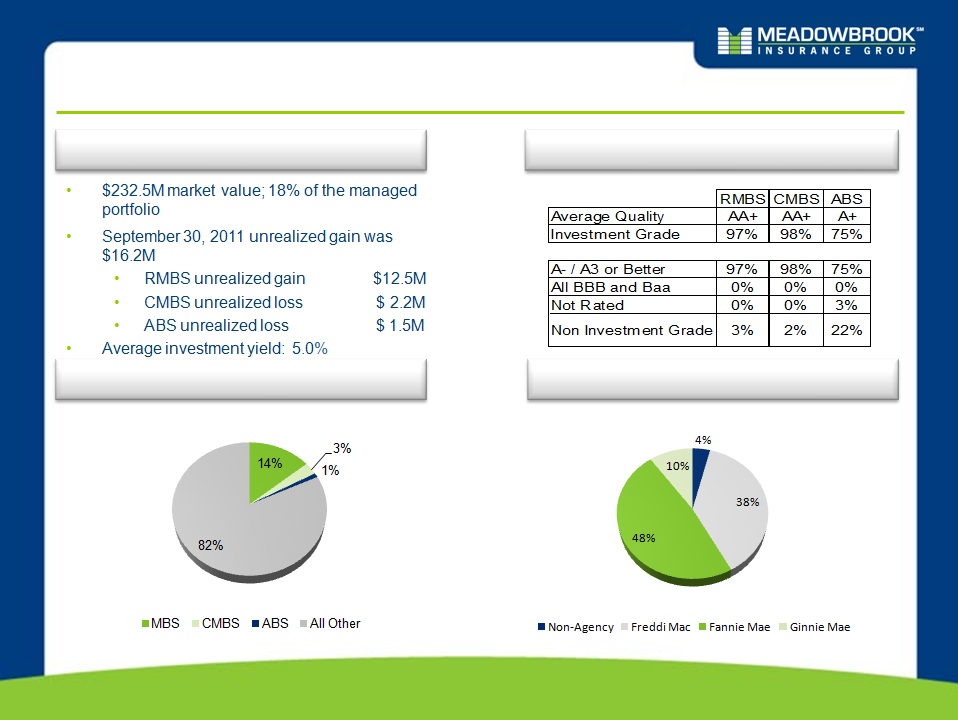2
Forward-Looking Statements
Certain statements made by Meadowbrook Insurance Group, Inc. in this presentation may
constitute forward-looking statements including, but not limited to, those statements that
include the words "believes," "expects," "anticipates," "estimates," or similar expressions.
Please refer to the Company's most recent 10-K, 10-Q, and other Securities and Exchange
Commission filings for more information on risk factors. Actual results could differ materially.
These forward-looking statements involve risks and uncertainties including, but not limited to
the following: the frequency and severity of claims; uncertainties inherent in reserve estimates;
catastrophic events; a change in the demand for, pricing of, availability or collectability of
reinsurance; increased rate pressure on premiums; obtainment of certain rate increases in
current market conditions; investment rate of return; changes in and adherence to insurance
regulation; actions taken by regulators, rating agencies or lenders; obtainment of certain
processing efficiencies; changing rates of inflation; and general economic conditions.
Meadowbrook is not under any obligation to (and expressly disclaims any such obligation to)
update or alter its forward-looking statements whether as a result of new information, future
events or otherwise.
Notes on Non-GAAP Financial Measures
(1) Net operating income is a non-GAAP measure defined as net income excluding after-tax
realized gains and losses.
(2) Accident year combined ratio is a non-GAAP measure that the impact of any adverse or
favorable development on prior year loss reserves.
These non-GAAP metrics are common measurements for property and casualty insurance
companies. We believe this presentation enhances the understanding of our results by
highlighting the underlying profitability of our insurance business. Additionally, these measures
are key internal management performance standards.
















